4 ways to quickly check the partition type on Windows 11
So let's go through the ways to check partition type in Windows 11 quickly. That way, you can make sure the drive is set up correctly and ready to go.
1. Check partition type with Device Manager
Device Manager is an important Windows tool that allows you to view and manage all the hardware devices installed on your computer. You can use Device Manager to turn devices on or off, update drivers, or fix hardware-related problems.
Device Manager can also be useful in checking the partition type of the drive. Here's how to do it:
1. Right-click the Windows icon on the Taskbar and select Device Manager from the list.
2. Double-click the Disk drives button to expand it.
3. Right-click your drive and select Properties from the context menu.

4. Switch to the Volumes tab .
5. Click the Populate button .

You can check the partition type in the Disk Information section .

2. Check the partition type with the Disk Management tool
Disk Management is another built-in tool for managing hard drives and other storage devices connected to your system. You can use it to create, delete, format, and resize partitions on a storage drive.
To check the partition type of your drive using the Disk Management tool, follow the instructions below:
1. Press Win + X to open the Power User Menu and select Disk Management.
2. Right-click the drive whose partition type you want to check and select Properties .
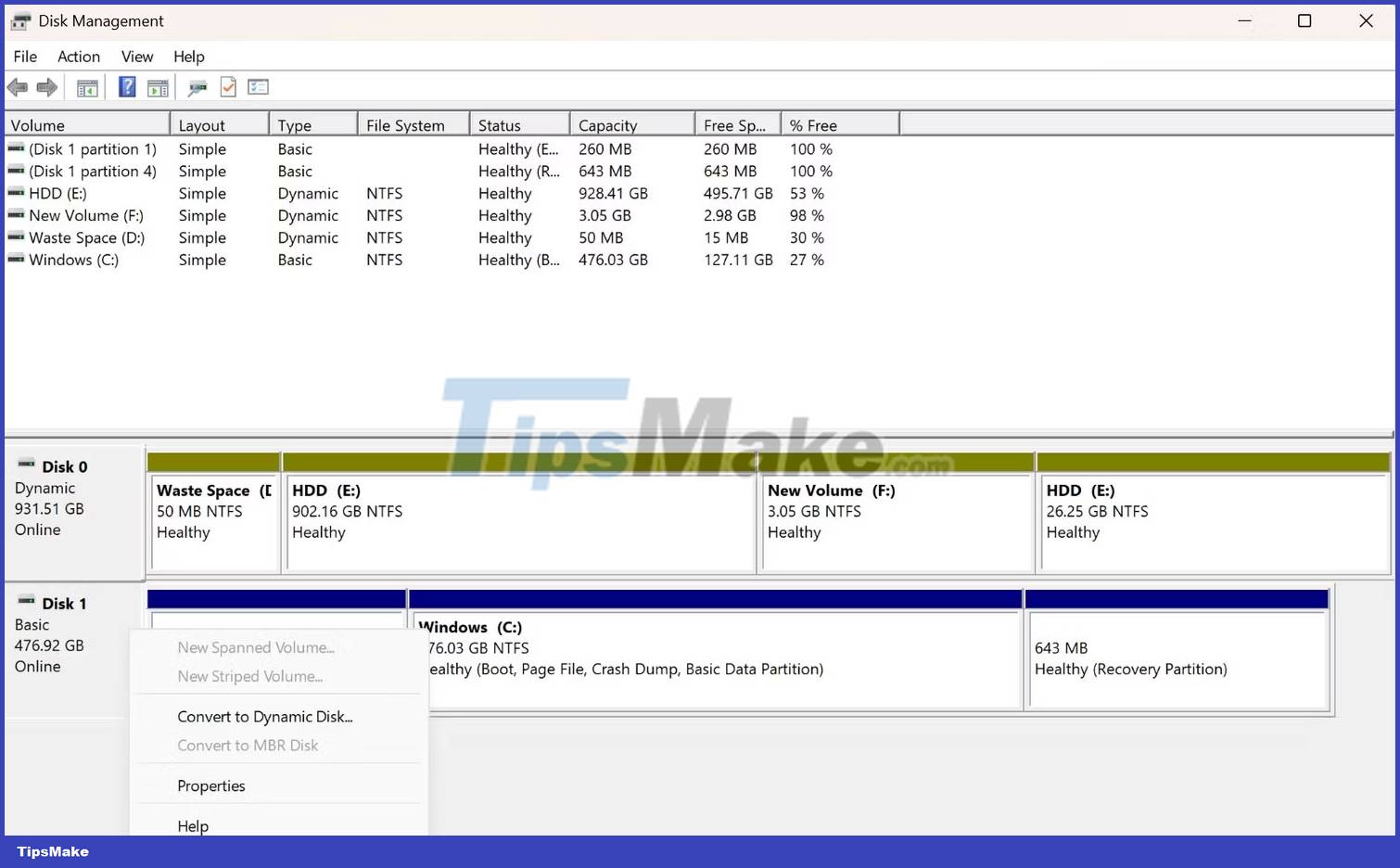
3. Switch to the Volumes tab to see the partition type.
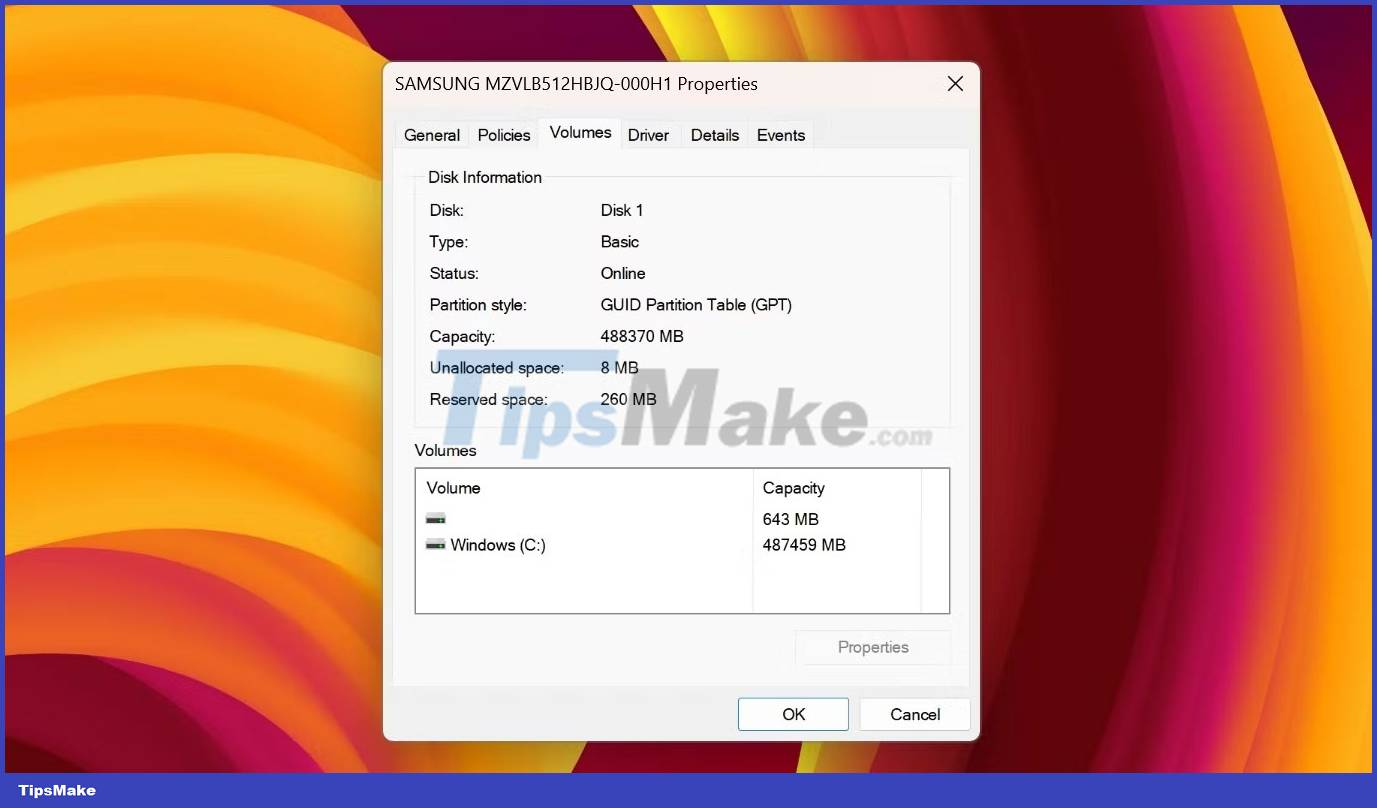
3. Check the partition type using the Settings app
The Settings app is the place to customize important Windows settings. You can do everything from download Windows updates to manage your wireless network configuration using the Windows Settings app.
The Settings app is also one of the places where you can check the drive's partition type. Here's how to do it:
1. Press the Win + I key to open the Settings app.
2. Select System from the left sidebar, then click the Storage option in the right pane.
3. Click Advanced storage settings and select Disks & Volumes from the drop-down menu.
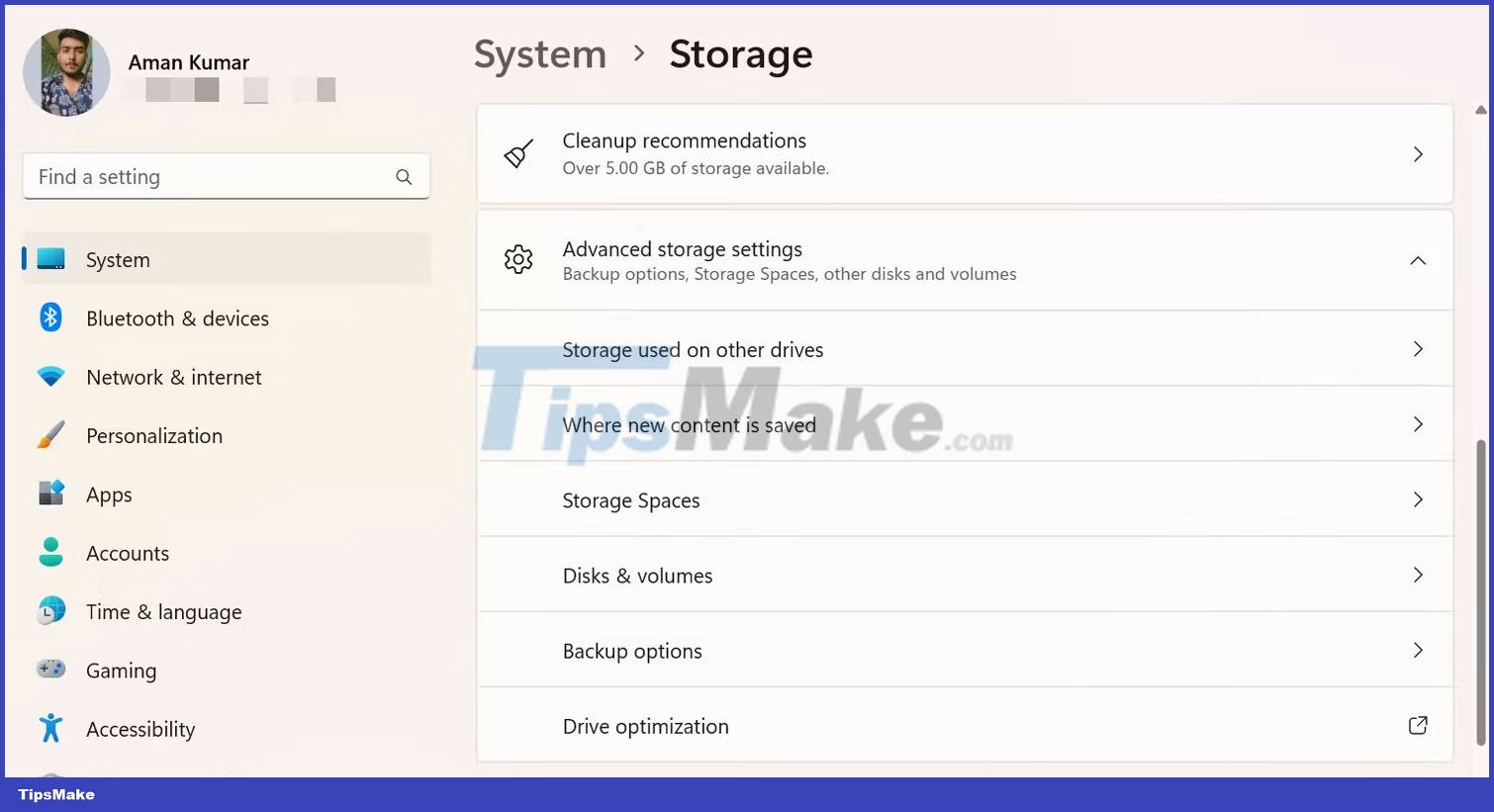
4. Click the Properties button next to the drive whose partition type you want to check.
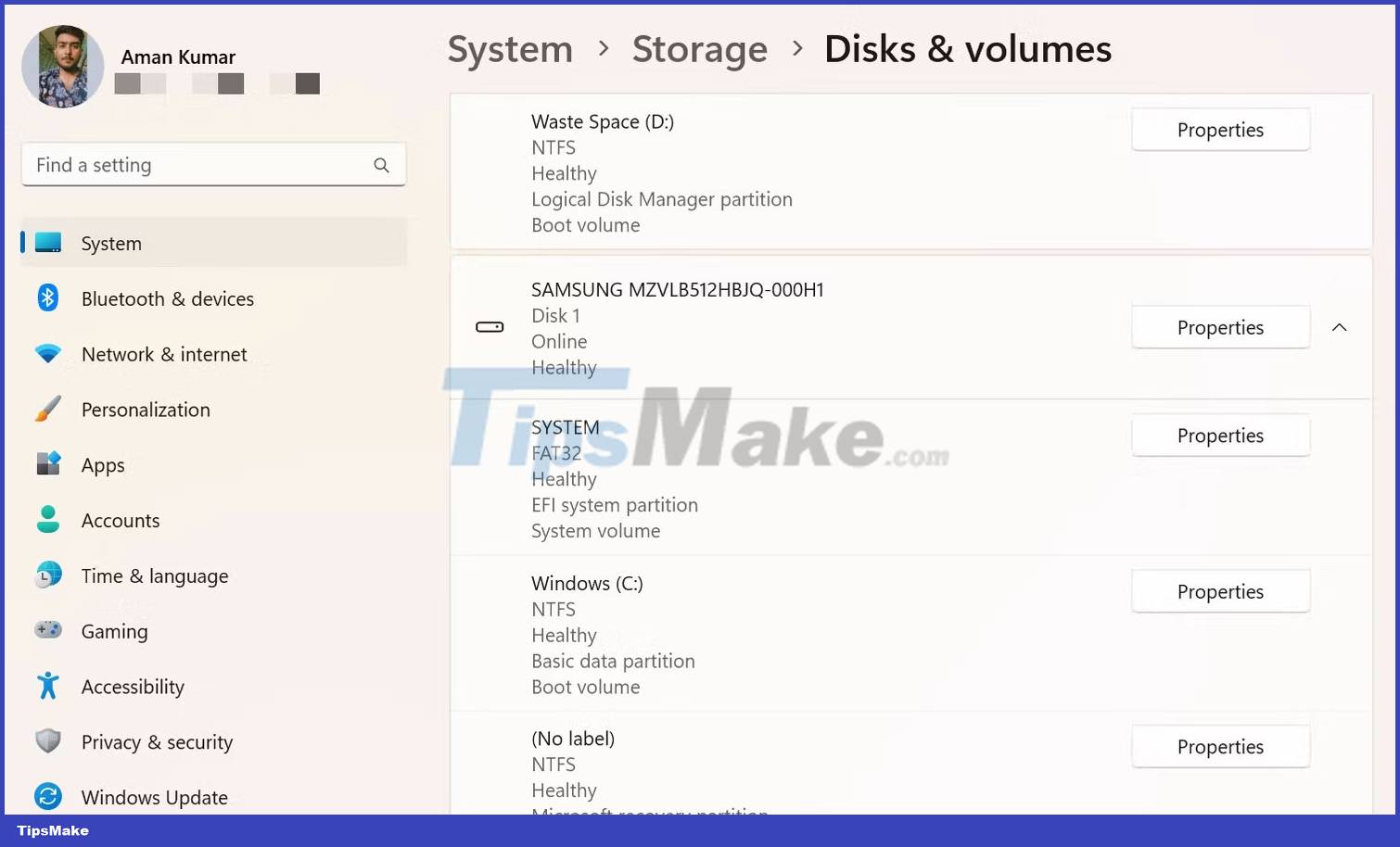
5. In the next window, you can check the partition type.
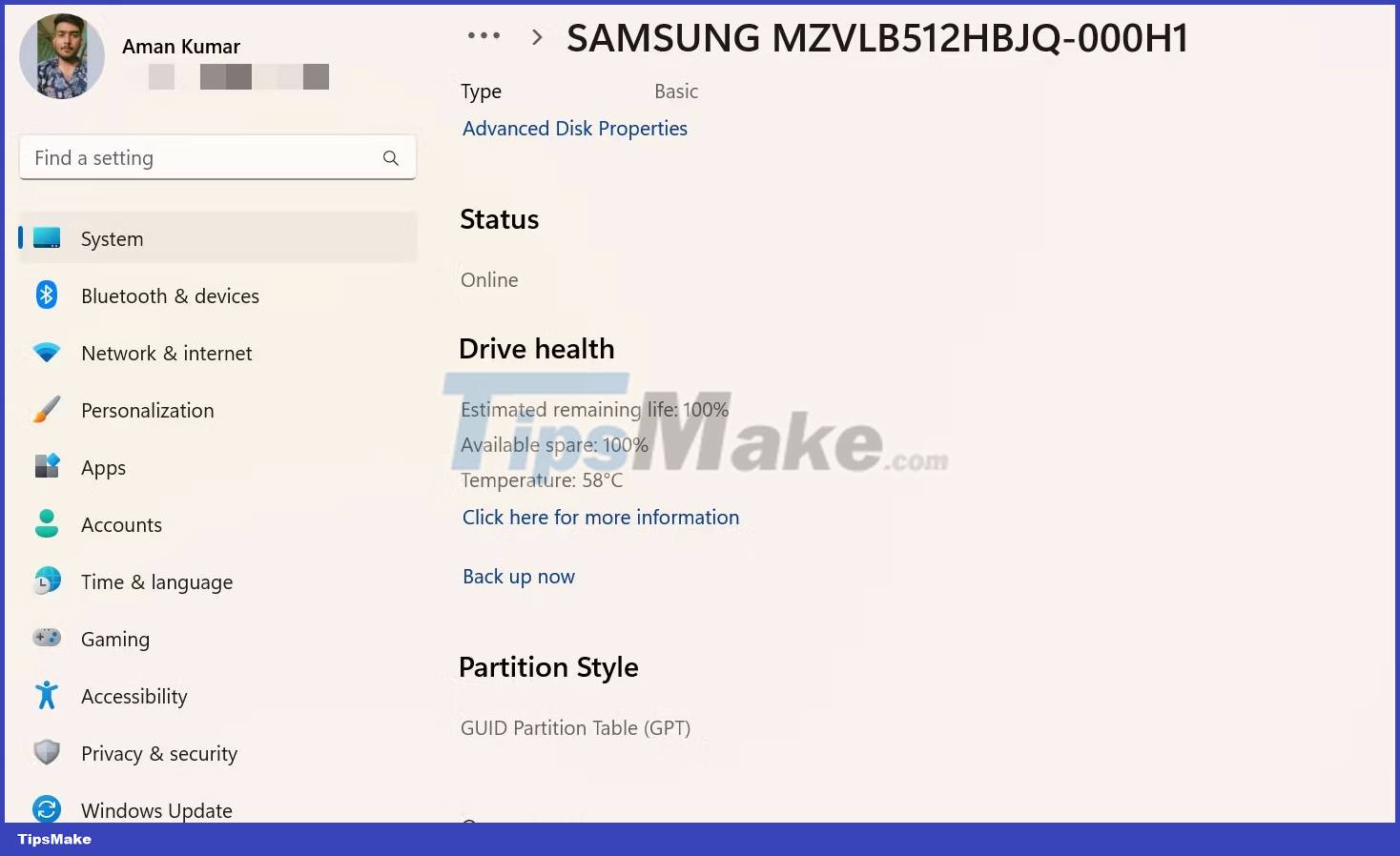
4. Check partition type with command line tool
Command line tools such as Windows PowerShell and Command Prompt are commonly used to resolve advanced system problems. But if you know the right method, you can use them to check your drive partition type.
Here's how to check the partition type using Command Prompt:
1. Enter Command Prompt in the Windows Start menu and select Run as administrator from the right.
2. In the Command Prompt window with admin rights, type diskpart and press Enter .
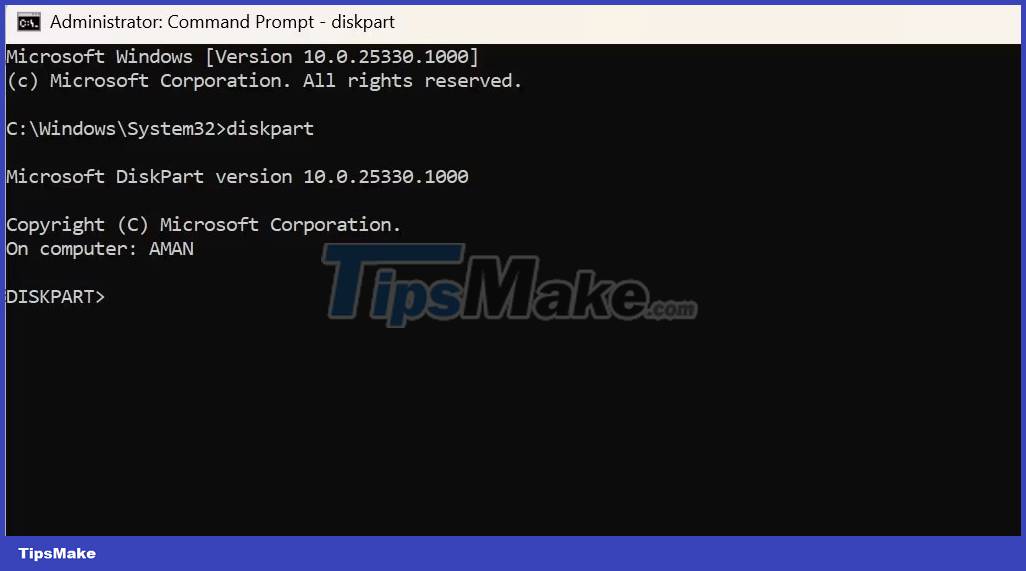
3. Type list disk and press Enter.
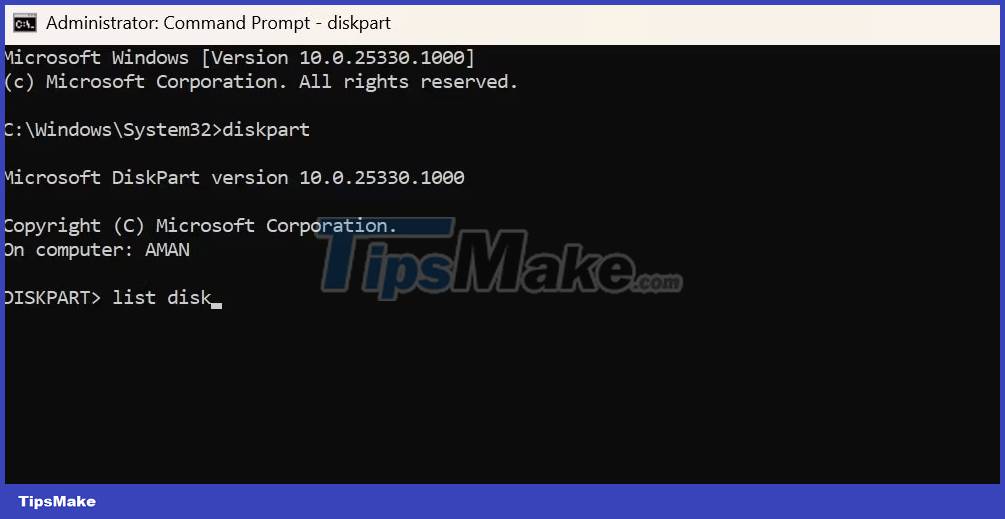
Check the Gpt column. You'll see an asterisk if your drive uses a GPT partition. And, if there's no asterisk, your drive uses an MBR partition.
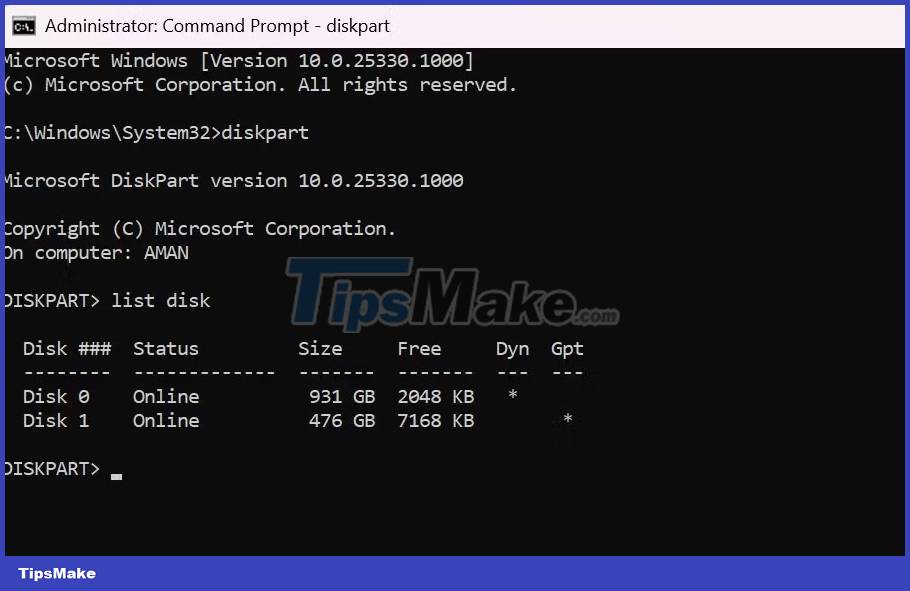
To test using Windows PowerShell, open a PowerShell window with admin rights, type the following command and press Enter .
Get-DiskLook at the Partition Style column to check your drive's partition type.
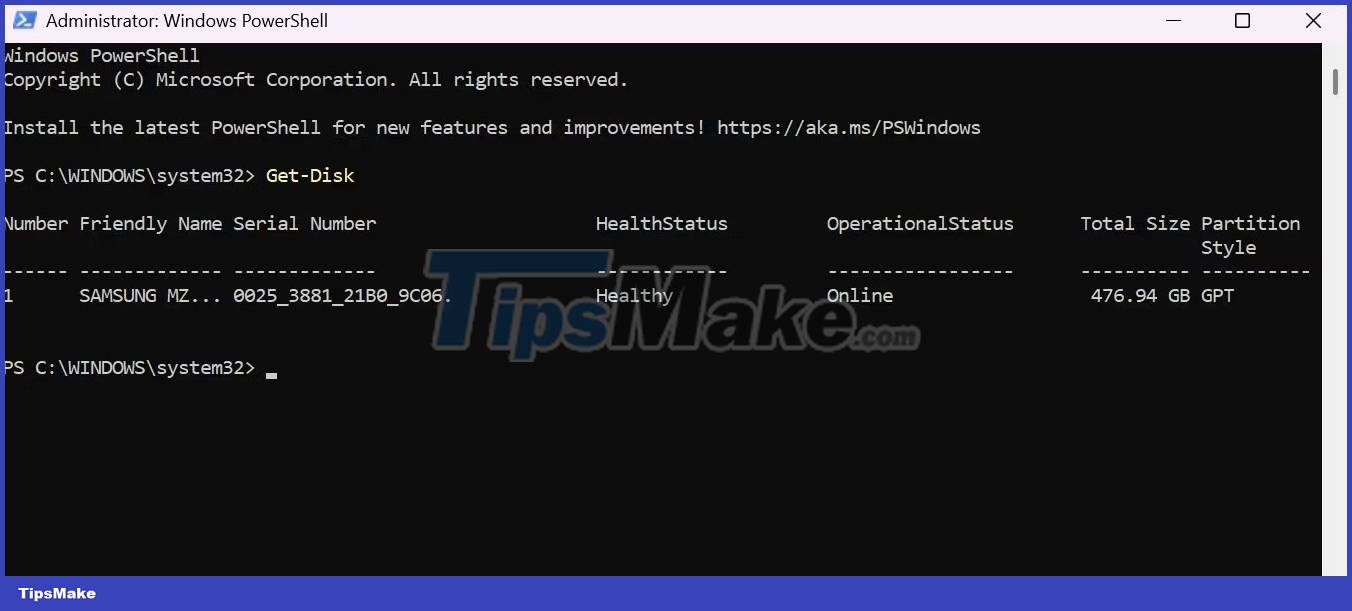
Whether you want to test drive compatibility or recover some important data, it's important to know about the drive's partition type. You can check the partition type of the drive using the methods above.
Hope you are succesful.
You should read it
- Remove 'reserve system' partition in Windows 7
- 3 ways to hide recovery partition (Recovery) on Windows 10 / 8.1 / 7
- How to fix Windows cannot be installed to this disk. The selected disk has an mbr partition table
- Paragon Partition Manager - Download the latest Paragon Partition Manager
- EASEUS Partition Master - Download the latest EASEUS Partition Master
- How to check the type of graphics card (GPU) on the computer
 How to fix Windows 11 computer overheating problem
How to fix Windows 11 computer overheating problem How to enable the new keyboard layout in Windows 11
How to enable the new keyboard layout in Windows 11 The market share of Windows 11 on Steam suddenly dropped for unknown reasons
The market share of Windows 11 on Steam suddenly dropped for unknown reasons 5 best virtual machines for Windows 11 PCs
5 best virtual machines for Windows 11 PCs How to fix the error of the brightness adjustment key not working in Windows 11
How to fix the error of the brightness adjustment key not working in Windows 11 How to change lock screen and screensaver timeout settings on Windows
How to change lock screen and screensaver timeout settings on Windows